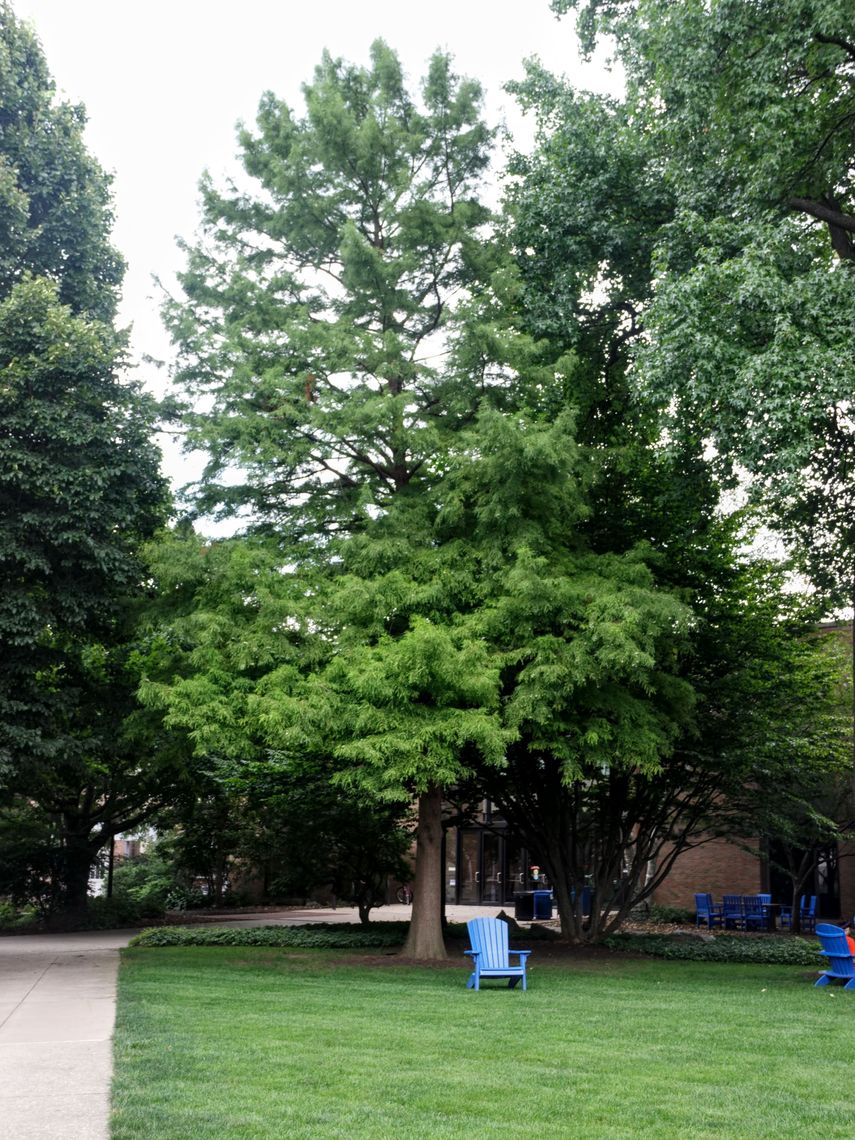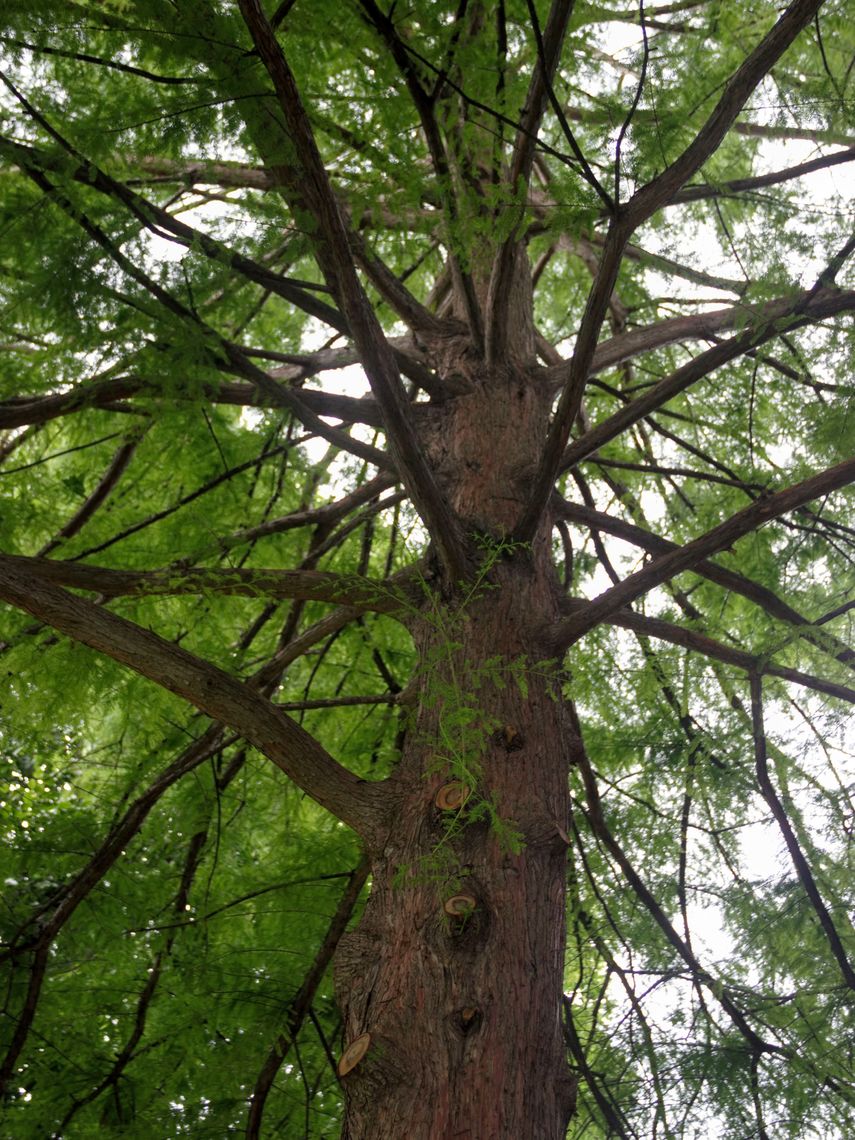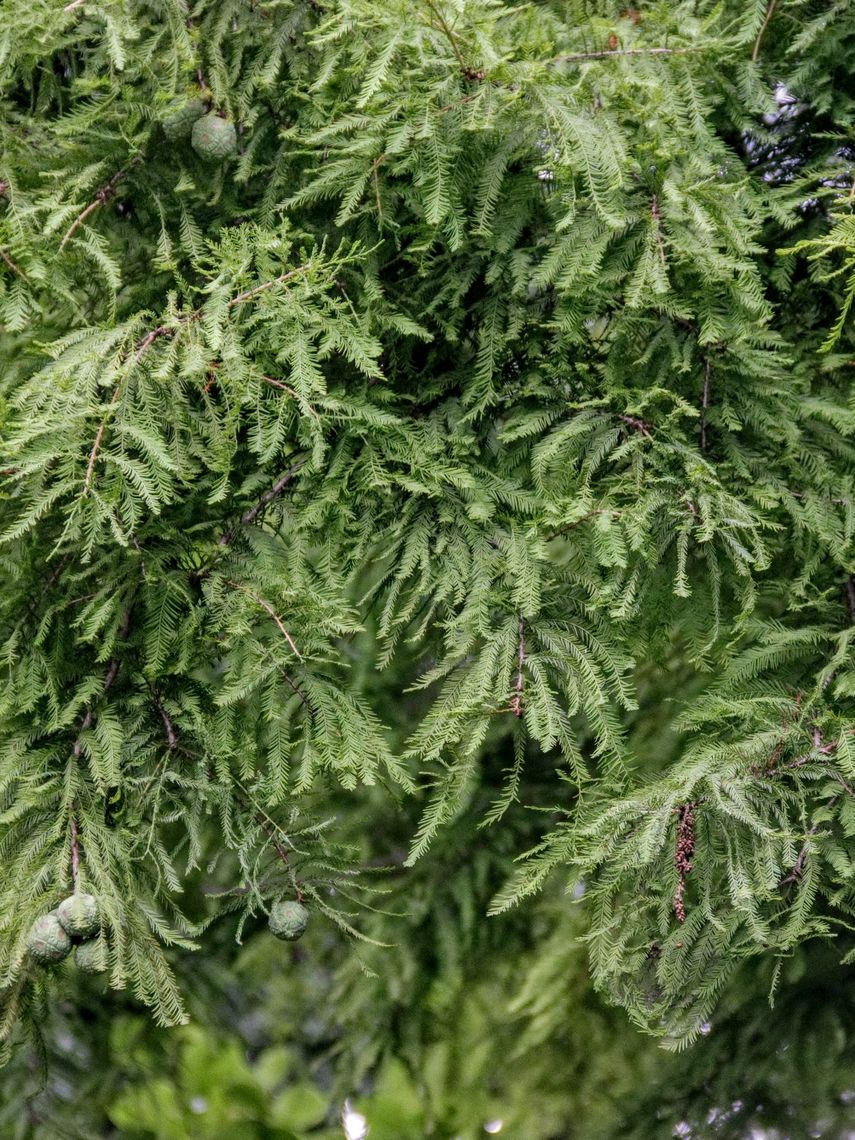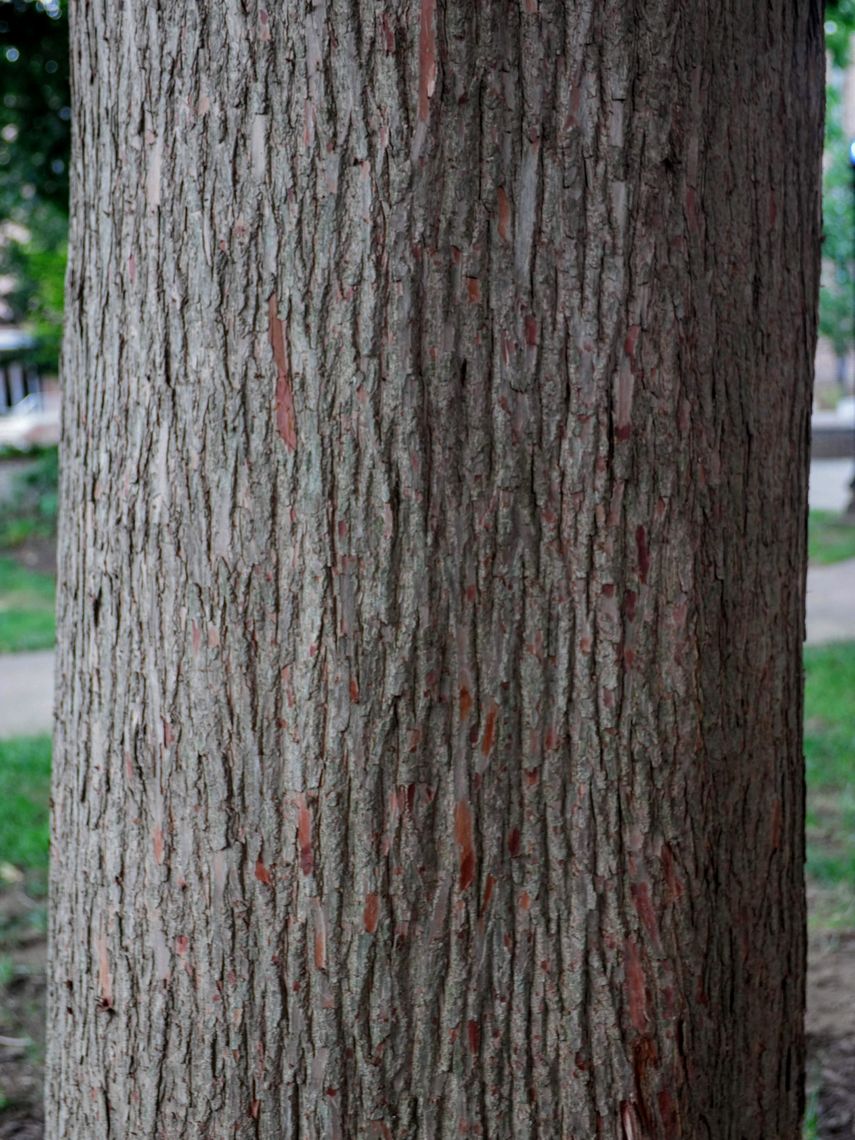Baldcypress-Common (Taxodium distichum)
The common bald cypress is one of the few conifers that loses its needles every winter. These needles are feathery and soft, and will turn an attractive orange-red to brown color in the fall. This tree can adapt to many different conditions and can be found in parks, along streets, or even along lakes. Its heavy rot-resistant wood is often used to make barrels and railroad ties. This tree attracts birds and small mammals.
Family: Cupressaceae (Cypress)
Characteristics: The ¼ an inch long, feathery needles are of a rich green to yellow-green color. In the fall, needles turn rusty orange to brown and eventually fall off the tree. The brown cones are small, round, and wrinkled, and remain on the tree throughout the winter. Bark is red-brown to gray-brown and fibrous. This tree is airy and has a pyramidal shape. It grows 50-70 feet high and 20-30 feet wide.
Foliage: Deciduous (leaves lost seasonally)
Geographic Origin: Southeastern United States (native)
Cultivation Notes: Requires low maintenance. Does best in full sun. Prefers acidic, moist to wet, and well-drained soils, though can tolerate a wide range of soil conditions, including standing water. This tree may be difficult to transplant due to its large taproot.
Number on Campus: 1
Sources: Dirr, Morton Arboretum, Missouri Botanical Garden




